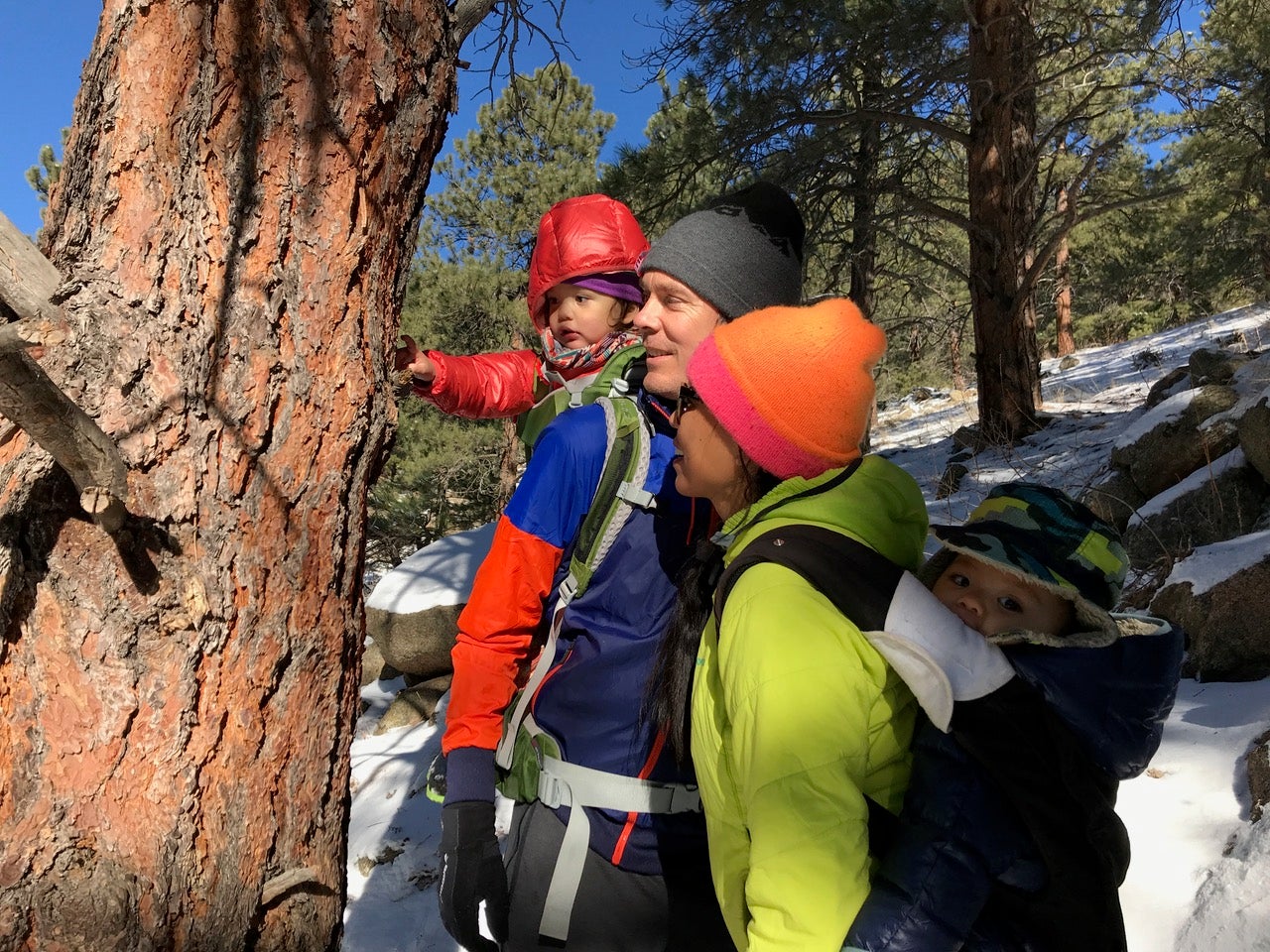How to Go Winter Hiking with Toddlers

'Lisa Jhung'
Scott and Jenny Jurek have spent the majority of their adult lives pursuing trail adventures, from Jenny’s multiple ultramarathons to Scott’s seven consecutive wins at the Western States 100-Mile Endurance Run and speed record (since broken) of the Appalachian Trail—an adventure chronicled in the book North: Finding My Way While Running the Appalachian Trail, released last spring .
The Jureks now have some extra company on the trail: their two-and-a-half-year-old daughter Raven and 9-month-old son Evergreen. When Raven was just three months old, the family hiked rim-to-rim in the Grand Canyon. And these days, with toddler Raven and baby Evergreen, the Jureks do (mostly short) hikes regularly in the Boulder, Colorado, foothills and in the nearby Indian Peaks Wilderness.
Even when the local hills are snow- and ice-covered , the foursome can be found on trails every week.
“We want the kids to experience the seasonal changes and be connected with the subtleties and cycles in nature,” says Scott. With a little prep, says the couple, and some cold-weather strategies, enjoying the natural world in the winter is more than doable…even with two kids under three years old.
Here’s how to enjoy your own winter wonderland with your little ones:
1. Bring (warm) snacks. Most parents know to never leave home without snacks, but make them belly warmers in the winter. . “We bring warm food and drinks for winter hikes,” says Scott, “like a Hydro Flask filled with ramen noodles or hot chocolate.”
2. Sing songs. Singing songs on the trail helps distract kids and turn low points (including cold gusts of wind) to high points. “Raven will start singing and then sometimes falls asleep mid-song if she’s in the carrier,” says Jenny. Plus, for kids in carriers or strollers, it’s sometimes nice to give them something to do.
3. Let them touch. The Jureks encourage their kids to feel the textures of nature—pine needles, bark, rocks, moss, snow—while hiking. In the winter, they’ll take off mittens so their littles can touch the bark of a tree, the pokiness of a pinecone. “They love to feel the different things they see,” says Scott.
4. Read books and look for wildlife. “We read a lot of books at home with animals in them that we might see on a hike,” says Jenny, “and we look for them while we’re on the trail. We’ll look for marmots, deer, birds, moose in the Indian Peaks, and any signs of wildlife.”
5. Let them hike on their own. Raven likes to hike on her own most often, even (or, especially!) on snowy trails. “She likes to hike. I think it makes her feel independent,” says Scott.
6. Layer. With toddlers switching between hiking and being carried, their body temperatures vary even on short outings. Layering clothing allows for adjustments on the go. It’s important to keep them warm when they’re not moving, as they’re generating no heat like you are.
7. Focus on extremities. “Especially when they’re in the carrier,” says Scott, “we always make sure there’s good blood flow to their feet and hands because the pressure in carriers and packs can restrict blood flow and they’re not moving much. We stop regularly to feel their faces, feet, and hands.”
8. Wear traction/use poles. Secure footing on icy terrain or soft snow is critical when carrying little ones. Attach traction like a pair of Kahtoola MICROspikes or NANOspikes to regular running shoes or boots . And using trekking poles adds stability. “I especially appreciate poles and traction when I’m carrying both kids, which adds about 55 pounds,” says Scott.
9. Check in. A mirror on a retractable cord (like this one from Lillebaby) attached to a baby-carrying backpack helps you keep an eye on your precious cargo. Jenny says she uses the mirror to see if baby Evergreen has fallen asleep or if there’s direct sun in his eyes.
10. Don’t rush things. “We like to keep the experience interactive and fun by throwing rocks in a river, looking at bugs, or listening to the wind,” says Scott. “By slowing down as a family, the kids get to show us the real minutiae of the surroundings and we end up discovering things we would have missed.”
Get more tips, trips, and stories about family outdoor adventures on BACKPACKER’s Families Gone Wild.